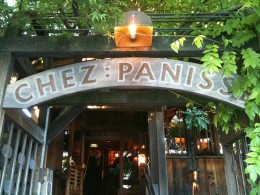Paying Extra For a Sweet Dinner Reservation

Last week we talked about the waning number of restaurants that offer reservations, and how alone I am in my hope for their demise (it’s fine! I accept I am in the wrong here). I guess supply and demand is catching up with us now — or with YOU, the ones who plan ahead — because, as Alan Sytsma at Grub Street reports, paying a premium to score a dinner reservation is now a thing, “whether we like it or not.” (We don’t.) (Or do we?)
The concept of paying for a table at a restaurant is hardly new. For as long as there have been hosts and maîtres d’, there have been customers willing to slip them a $20 for entrance into a packed dining room. Tactful, elegant, and, if done correctly, immensely satisfying. Alas, it seems like a dying art form, and now, even the simple act of greasing somebody’s palm is entering the digital realm — not everyone is sold on the idea.
The pay-for-reservations industry is young, but it’s nevertheless competitive, mostly owing to scaling operations like Killer Rezzy, which snap up restaurant reservations and charge people to use them.
Restaurants at “hot” (sorry) New York restaurants on weekend nights go for anywhere between $25 and $50. I do think it’s silly, or scammy to pay a middleman to get you dinner reservations that are usually free, but I would probably be willing to do it if I were in a desperate work-related situation (and I lived in Mad Men? I don’t know) or there was a special occasion and somebody was in from out of town and had big Minetta Tavern-based dreams.
Sytsma suggests restaurants take advantage of the demand in a way where they will still benefit:
Here’s where the pay-for-reservations approach feels skewed, though: Diners still see the cost of eating out as money that pays for a meal, not a table. In other words, restaurant customers will pay for an experience, but they tend to balk when they’re asked to also pay for access to that experience.
So, what can an owner do that won’t immediately alienate customers? Adjust the price of the experience itself. It’s an idea that’s gaining traction.
He mentions a few restaurants that adjust their prix-fixe based on demand — Chez Panisse, for example, charges $65 on Monday, $85 on Thursday, and $100 on Fridays and Saturdays — which seems like a better solution.
Relatedly: in an alternate life I am the kind of person who can slip the hostess a twenty and be all smooth about it. In this life, well, I don’t go to restaurants that fancy, but even after getting a haircut, handing the stylist $20 is a social interaction just a smidge beyond my skill set. “HERE YOU GO!!!” I shove my hand out into the space between us, waving money at the poor woman. Money! The worst. Let’s never talk about it again.
Photo: banky177
Support The Billfold
The Billfold continues to exist thanks to support from our readers. Help us continue to do our work by making a monthly pledge on Patreon or a one-time-only contribution through PayPal.
Comments